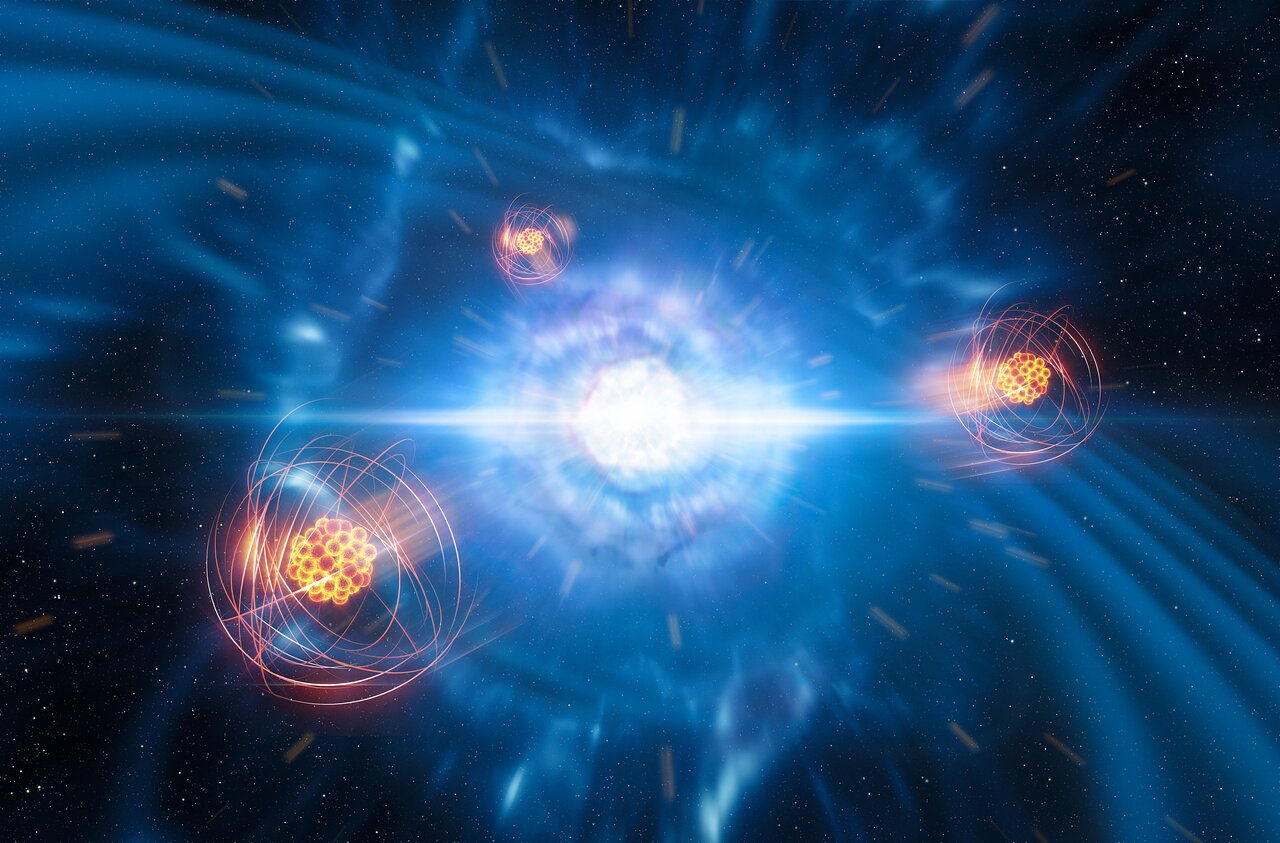Major space news from DAWN: The final piece in the puzzle of the origin of the elements
Press release from University of Copenhagen: The first unequivocal evidence of where the heaviest elements were forged has now been found by a research group led by the University of Copenhagen. For the first time, an element heavier than iron has been clearly detected in the collision of two neutron stars, resolving one of the fundamental questions about the history of the universe.

Since the 1950s, we have known that hydrogen and helium were formed during the Big Bang, and that heavier elements up to iron are created by nuclear fusion in stars and when stars explode as supernovae. But iron is only no. 26 out of about 90 naturally occurring elements in the periodic table. Where the other elements heavier than iron came from has long been a mystery. For some time now we have known that some of them form in the envelopes of low-mass stars, so-called AGB stars. But only half of the elements heavier than iron are created this way. So where do the rest come from?
Now a research team led by astrophysicist Darach Watson of the Niels Bohr Institute and the DNRF center DAWN has, for the first time, found spectroscopic evidence that heavy elements are created in the explosion that happens when two neutron stars collide. The researchers have identified the metal strontium in a spectrum from a neutron star collision observed in 2017. The result is published in the scientific journal Nature.
“Before this we were unable to identify any specific element created in a neutron star merger. There were strong indications and good circumstantial evidence that heavy elements were created in these events, but the unequivocal evidence was missing until now,” says astrophysicist Darach Watson of the Niels Bohr Institute at the University of Copenhagen, adding:
“One of the most fundamental questions about the universe has been: where do the elements of the periodic table come from? You could say that this is the last piece of the puzzle of the formation of the elements.”
Read the full press release from University of Copenhagen here
